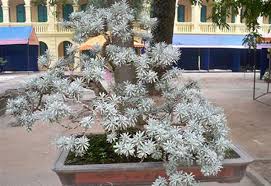Factors Influencing the Design of Royal Palaces
Royal palaces have long served as symbols of power, wealth, and cultural significance. From the grandeur of European palaces to the opulent structures of ancient China, these architectural marvels are not just residences for monarchs but representations of the state’s strength and the ruler’s divine right to govern. The design of royal palaces is influenced by numerous factors, ranging from geographical location to political, cultural, and religious considerations. In this article, we will explore the key elements that have historically shaped the design of royal palaces and their symbolic meanings.
1. Geographical Location and Environmental Considerations
One of the primary factors influencing the design of royal palaces is their geographical location. The palace must not only reflect the power of the ruler but also take into account the surrounding environment. The natural features of the land, such as mountains, rivers, and forests, play a significant role in shaping the structure and layout of the palace.
For example, the Forbidden City in Beijing was built with Feng Shui principles in mind, where the north side of the palace is protected by Jingshan Hill, providing a stabilizing force. The water moat surrounding the Forbidden City also follows Feng Shui rules, helping to protect the emperor and maintain the flow of positive energy (Qi). In this case, the location of the palace is essential for ensuring both physical protection and a harmonious environment.
Similarly, the Summer Palace, also in Beijing, was constructed with careful attention to its natural surroundings. The palace is centered around Kunming Lake, and Longevity Hill provides a natural backdrop to the complex. The integration of natural elements such as water and mountains in the design of royal palaces is a recurring theme across different cultures and periods.
2. Symbolism and Political Power
A key aspect of any royal palace is its ability to convey the ruler’s political power. The design and layout of the palace are often symbolic of the state’s authority and the divine status of the monarch. This is evident in the strategic use of spaces, the orientation of buildings, and the overall architectural style.
In China, the design of the Forbidden City was meant to reflect the emperor’s role as the “Son of Heaven” and the center of the universe. The Forbidden City’s central axis runs north to south, symbolizing the emperor’s connection to heaven and earth. The scale of the palace complex, with its vast courtyards and monumental halls, is designed to emphasize the emperor’s supreme power over his subjects.
Similarly, in Europe, the design of royal palaces such as the Palace of Versailles in France also embodies political power. The palace’s grand size and extravagant gardens were meant to demonstrate the absolute authority of Louis XIV, the “Sun King.” The Hall of Mirrors, for example, was a symbol of the king’s central role in the nation, with mirrors reflecting his power and grandeur.
3. Religious and Cultural Beliefs
Religious and cultural beliefs often play a significant role in the design of royal palaces. In many ancient cultures, palaces were designed not only to house rulers but also to serve as places for spiritual and religious rituals. The palace was considered the center of the universe, and its design reflected the ruler’s divine connection to the heavens.
In ancient Egypt, for example, the palace was often linked to the divine, with architectural features that symbolized the ruler’s connection to the gods. The great temples, located alongside royal residences, emphasized the importance of religion in the life of the monarch. Egyptian palaces were typically built in alignment with the sun’s path, which was seen as a symbol of the ruler’s connection to the gods and their mandate to rule.
In China, the Forbidden City was designed to be a reflection of the cosmic order, with its various halls and courtyards representing different elements of life and the universe. The presence of sacred objects and ceremonial spaces within the palace complex highlights the spiritual role of the emperor, who was believed to be the intermediary between heaven and earth.
In many cultures, royal palaces often incorporate religious symbols or artifacts to underscore the ruler’s divine right to rule. The inclusion of altars, shrines, and sacred spaces within the palace also demonstrates the inseparable relationship between politics, religion, and culture.
4. Security and Defense
The security and defense of royal palaces have always been a priority, especially in turbulent times when monarchs faced potential threats from rival factions or foreign invaders. The design of the palace is often influenced by considerations of defense, with walls, gates, and watchtowers playing a crucial role in protecting the ruler.
In ancient China, the design of palaces like the Forbidden City included large, fortified walls and multiple gates to prevent unwanted entry. The Forbidden City was surrounded by a large moat, which further enhanced the security of the complex. This fortress-like design ensured that the emperor and his court were protected from external threats while also emphasizing the isolation of the ruler from the common people.
Similarly, in Europe, royal palaces were often designed with security in mind. The Tower of London, for instance, served as both a royal residence and a fortress. Its thick stone walls, strategic placement along the River Thames, and watchtowers were all intended to provide security for the ruling monarch.
Even in more peaceful times, the design of royal palaces often included elements of defense. High walls, gates, and strong fortifications were used not only to protect the monarch but also to establish a physical boundary between the ruler and the outside world.
5. Functionality and the Needs of the Court
In addition to its symbolic and defensive aspects, the design of a royal palace must also accommodate the practical needs of the ruler and the court. The palace must be equipped with the necessary spaces for daily activities, including living quarters, administrative offices, ceremonial halls, and spaces for entertainment and recreation.
For example, in the Forbidden City, the emperor’s private quarters were situated in the Inner Court, while the Outer Court was used for official state ceremonies and meetings. The division of space between private and public areas was essential for maintaining the separation of the ruler’s personal life from the demands of statecraft.
Similarly, the Palace of Versailles in France features distinct areas for the monarch’s personal use, including the king’s apartments and the royal chapel, as well as larger public areas for the court and ceremonies. The grand gardens of Versailles were designed to host lavish celebrations, while the Hall of Mirrors served as a venue for diplomatic receptions and political discussions.
The functional aspects of the palace’s design are also influenced by the need to accommodate the court. Royal families often had large entourages, including advisors, courtiers, military officers, and servants, who all required space within the palace. The architecture of the palace was designed to provide a sense of order and hierarchy, with different areas designated for various functions.
6. Technological Advances and Innovations
Throughout history, the design of royal palaces has been shaped by the technological innovations of the time. Advances in engineering, construction techniques, and materials have allowed for increasingly grand and elaborate royal palaces.
In ancient times, the development of sophisticated construction techniques enabled the construction of massive stone structures, such as the Pyramids of Egypt and the great temples of Mesopotamia. These monumental structures not only demonstrated the technological prowess of the ancient world but also symbolized the power and immortality of the rulers.
During the Renaissance in Europe, new building techniques such as the use of domes and arches were employed in the design of royal palaces. The use of perspective in architectural design, for instance, was a hallmark of Renaissance palaces, with buildings such as the Palazzo Pitti in Florence showcasing the period’s innovations in design.
In the 18th and 19th centuries, the industrial revolution brought about new technologies that allowed for the construction of more expansive and luxurious royal palaces. The Palace of Versailles, for example, saw the addition of elaborate gardens, fountains, and water features, all of which were made possible by the technological advancements of the time.
7. Cultural and Artistic Influences
The design of royal palaces has also been shaped by cultural and artistic influences, as they often reflect the tastes and preferences of the ruling family. The style of the palace may vary greatly depending on the cultural context, reflecting the ruler’s desire to associate with particular artistic traditions or styles.
In China, for instance, the design of the Forbidden City is heavily influenced by traditional Chinese architecture, which emphasizes symmetry, balance, and harmony with nature. The use of wooden beams and tiled roofs is characteristic of Chinese palace design, as are the intricate carvings and decorative elements.
In Europe, the Baroque and Rococo styles dominated the design of royal palaces during the 17th and 18th centuries. These styles were characterized by ornate decoration, grand facades, and expansive gardens. The Palace of Versailles, with its opulent interiors and expansive gardens, is a prime example of the Baroque style, reflecting the absolute power of the French monarchy.
Conclusion
The design of royal palaces is a complex and multifaceted process influenced by a variety of factors, including geographical location, symbolism, security, functionality, technological advancements, and cultural traditions. From the grand scale of the Forbidden City to the intricate details of Versailles, royal palaces have served as more than just residences—they are enduring symbols of political power, cultural identity, and divine rule. The careful consideration of these factors in the design of royal palaces continues to inspire architects and designers to this day, demonstrating the enduring legacy of these architectural masterpieces.


